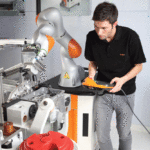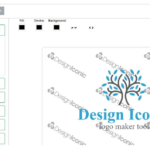11 Ways to Improve Your Production Management
Production management is the application of management principles to the production function in a factory. The main goal of production management is to ensure that the factory produces the right product in the right quantity and at the right time.
Production management involves a number of different tasks, including:
Planning
Planning is the process of deciding what needs to be produced and how it should be produced. Production planners must consider factors such as customer demand, production capacity, and supplier availability.
Organizing
Organizing is the process of allocating resources (e.g., machines, workers, materials) to produce the desired product.
Directing
Directing ensures that workers are carrying out their tasks in the most efficient way possible.
Controlling
Controlling monitors the production process and makes changes as necessary to ensure that the desired outcome is achieved.

Image by Freepik
Why is Production Management Important?
Production management is an important part of any factory, and it plays a crucial role in ensuring that the factory operates efficiently and produces the right product. By understanding production management principles, factory owners can ensure that their factories are running as smoothly as possible.
1. Assess your process and make changes where necessary
It’s important to take a step back and occasionally assess your entire production process. Make changes where necessary in order to improve efficiency. Sometimes something as simple as rearranging the workstations can make a big difference.
2. Implement a lean management system
Lean management is a system thinking approach that can help you eliminate waste and improve productivity. It focuses on creating value for the customer while minimizing waste. Many resources are available online to help you get started with lean management if you’re not familiar with it already.
3. Eliminate unnecessary steps in your process
Take a look at your process and see if there are any unnecessary steps. If there are, eliminate them. Every step in your process should add value to the customer.
4. Standardize your processes
Standardizing your processes can help improve efficiency and consistency. It’s important to have clear, concise guidelines for everyone in your organization to follow. This will help ensure that everyone is on the same page and working towards the same goal.
5. Train your employees effectively
Training your employees effectively is critical for improving productivity. Make sure you provide adequate training so that they understand the process and how their role fits into it. Also, be sure to update them on any changes to the process, so they’re always up-to-date.
6. Use visual management tools
Visual management tools can be extremely helpful for improving productivity. They provide a visual representation of the process and help employees see how their work fits into the big picture. There are many different types of visual management tools available, so find one that works best for you and your team.
7. Organize your workspace efficiently
Your workspace should be organized in a way that promotes efficiency. Ensure everything is within easy reach and that all the necessary tools and supplies are readily available.
8. Implement 5S principles
The 5 ‘S’ principles can help you create a clean, organized, and efficient workspace:
- Sort,
- Set in Order,
- Shine,
- Standardize, and
- Sustain.
9. Use quality control processes
Quality control processes are essential for ensuring that your products meet the highest standards. Implementing a good quality control system will help you catch defects early on and prevent them from affecting the final product.
10. Monitor your production process closely
Monitoring your production process closely is key for improving efficiency. You need to identify and correct any problems as they occur. This requires a lot of data collection and analysis, but it’s well worth the effort in the end.
11. Use performance metrics to track progress
Performance metrics can be a valuable tool for tracking progress and identifying areas for improvement. You can see your process falling short and make the necessary changes to improve productivity by analyzing your performance metrics.
Overall, improving your production management is critical for the success of your business. These 11 tips are a great place to start, but you can do many other things to improve efficiency and productivity. Keep experimenting and find what works best for you and your team.
Having a well-planned function is essential for quality products, increased production rates, and decreased unit costs when it comes to production. This ultimately benefits the consumers with lowered prices and better-quality products. Production management must take many factors into account, such as labor requirements, machines, and tools, materials, sequence of operations, storage space, and methods of conveyance. By efficiently organizing all these aspects, businesses can streamline their production process and achieve higher throughput.
Another important element of good production management is maintaining a balance between meeting the current demand and preparing for future increases in demand. This involves forecasting future customer needs and ensuring that the necessary resources are available when demand surges. It’s also important to be able to adapt quickly to changes in the market, for example, introducing new products or altering production processes in response to customer feedback.
All of these advantages of production management can result in increased profits and a more efficient, profitable business.
Cover Image by Freepik
















